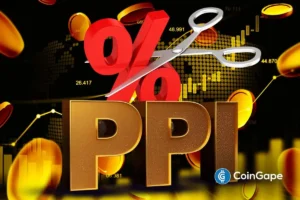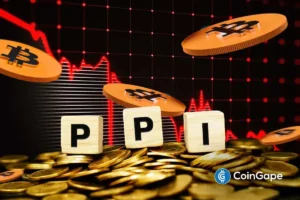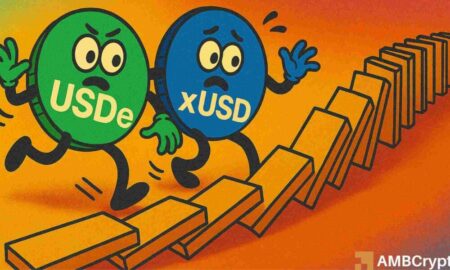Understanding the Recent Decline of Pump.fun: Key Insights and Market Reactions
The cryptocurrency market is notorious for its volatility, and altcoins like Pump.fun (PUMP) have recently come under substantial pressure due to bearish trends. The decline of Pump.fun can primarily be attributed to significant team wallet activities, particularly a staggering $436.5 million sent to exchanges. This article examines the factors contributing to Pump.fun’s downturn, whale behaviors, and potential market outcomes.
What Drove Pump.fun’s Decline?
The most glaring factor behind Pump.fun’s decline is the team’s decision to transfer a considerable amount of funds—$436.5 million in USDC—to exchanges. This move raised alarms about possible market sell-offs, as historical trends indicate that such actions often accompany team-led selling phases. In the past, similar strategies resulted in significant market declines, leading investors to become wary of potential dumps. When a substantial amount of liquidity is moved to exchanges, fear typically arises among holders, prompting them to sell their stakes to avoid potential losses.
Moreover, during the same timeframe, Mike Token has seen fluctuating volumes transferred out of exchange wallets, hinting at potentially bearish sentiments that could drive prices lower. When fear circulates in the market, it influences trading behaviors, leading to a cascade effect of selling that further exacerbates downward price pressure.
Declining Buyback Support
In addition to heavy exchange transfers, Pump.fun has decreased its token buyback activities, which play a critical role in providing price support. Recent data showed a 36.5% drop in buyback spending, falling below $1 million. This lack of buyback support reflects a reduced team conviction in boosting PUMP’s price, signaling weakness to the market. When buybacks decrease, it creates a vacuum of support that can lead to a more pronounced decline, placing pressure on the asset amidst overall market bearishness.
The decrease in buybacks is especially concerning for investors, as it implies less confidence from the project’s team regarding future price appreciation. Without adequate support to stabilize the market, the risk of further downside becomes increasingly evident.
Whale Behavior: Accumulation Amid Downturn
Despite the negative sentiment surrounding Pump.fun, noteworthy activity has been observed among whale investors. Whale accumulation has been robust, with top holders collectively adding 20 billion tokens to their wallets amidst the token’s recent price decline. Data suggests that buyers have engaged more actively than sellers, dominating four out of the last seven trading days, showcasing strong demand even in a bearish market.
Additionally, substantial buy volumes—39.23 billion since mid-November—indicate bullish sentiment from the larger investors, who appear to be capitalizing on the price drop. This accumulation contrasts sharply with retail investor behavior and could indicate a belief that PUMP has been oversold, potentially leading to future price recovery.
Market Technical Analysis: A Test for Recovery
Analyzing the technical aspects of Pump.fun, the token experienced a rejection at $0.0048 and fell within a descending price channel, hitting a low of $0.0024. As it trades around $0.0026, a crucial question arises: Can PUMP recover from its recent lows? The DMI Stochastic Momentum Index shows discouraging signs with deeply negative readings, while the token trades below critical exponential moving averages (EMA), including EMA20, EMA50, EMA100, and EMA200. These indicators collectively affirm strong bearish momentum, making it essential for the market to evaluate the potential for price recovery.
To signal a reversal, Pump.fun must reclaim the $0.0030 level, navigating past the EMA20 situated at $0.0033. If buyers can successfully push the price back up, it may indicate a shift in market sentiment and a possible return to upward momentum.
Potential Implications: The Path Forward
As Pump.fun grapples with these challenges, market participants face critical questions about the future trajectory of the token. If the team continues to sell significant portions of its holdings and whales can’t absorb the selling pressure, PUMP may slide toward the critical support level of $0.0022. Conversely, an uptick in buying interest from retail and whale investors could pave the way for a much-needed market reversal.
Investors should remain watchful, not just of PUMP’s price action but also of broader market trends and potential impacts from macroeconomic factors affecting the crypto landscape. Awareness of these elements will be crucial in navigating the unpredictable world of cryptocurrencies.
Conclusion: Navigating the Future of Pump.fun
In summary, the decline of Pump.fun is fueled by team-led exchange transfers and diminished buyback support, instigating fears across the investor community. Nonetheless, whale accumulation signifies potential bullish outlooks amid the downturn. For those invested in or considering Pump.fun, closely monitoring market behavior, especially trading volumes and technical indicators, will be essential for making informed decisions in this turbulent environment.
As the crypto market contemplates its recovery, Pump.fun stands at a crossroads where decisive actions from both the team and investors will dictate its next phase. Staying informed and strategically engaged will be key to navigating the high-stakes world of cryptocurrency trading.











![Plasma [XPL] Declines After Airdrop Surge – Has the Hype Around the ‘New Chain’ Faded?](https://icoinmarket.com/wp-content/uploads/2025/11/Lennox-1-6-1000x600-450x270.png)




